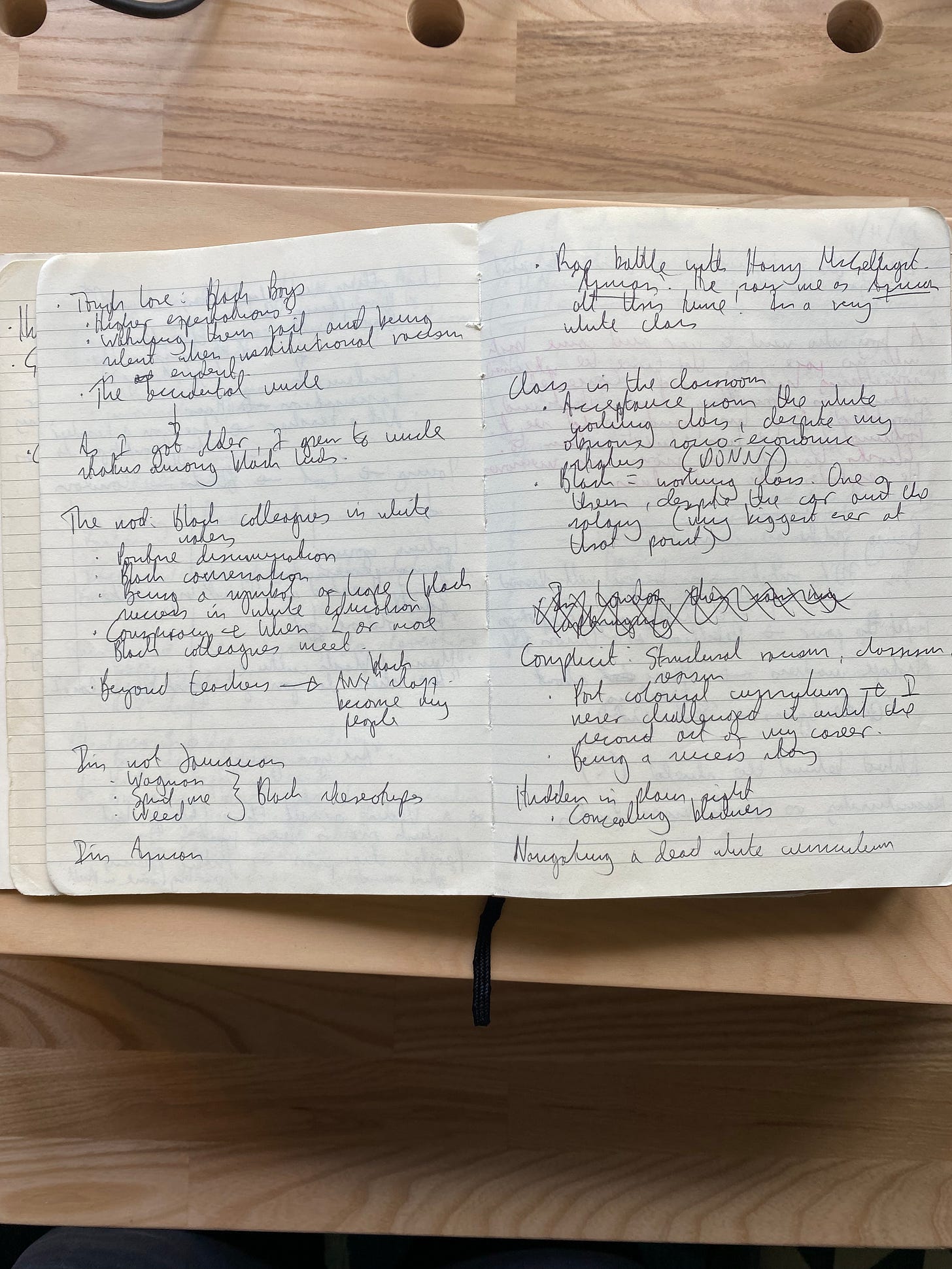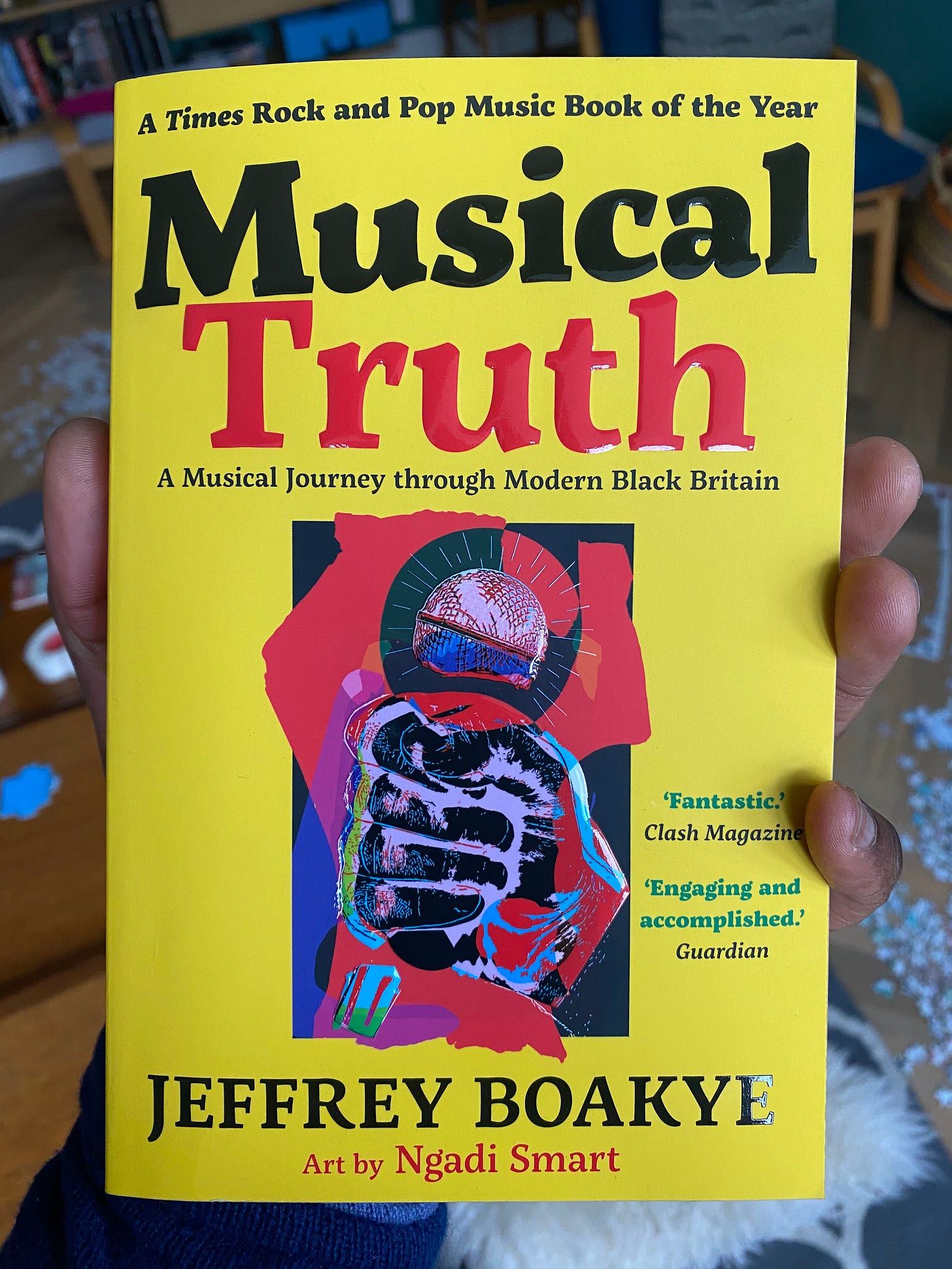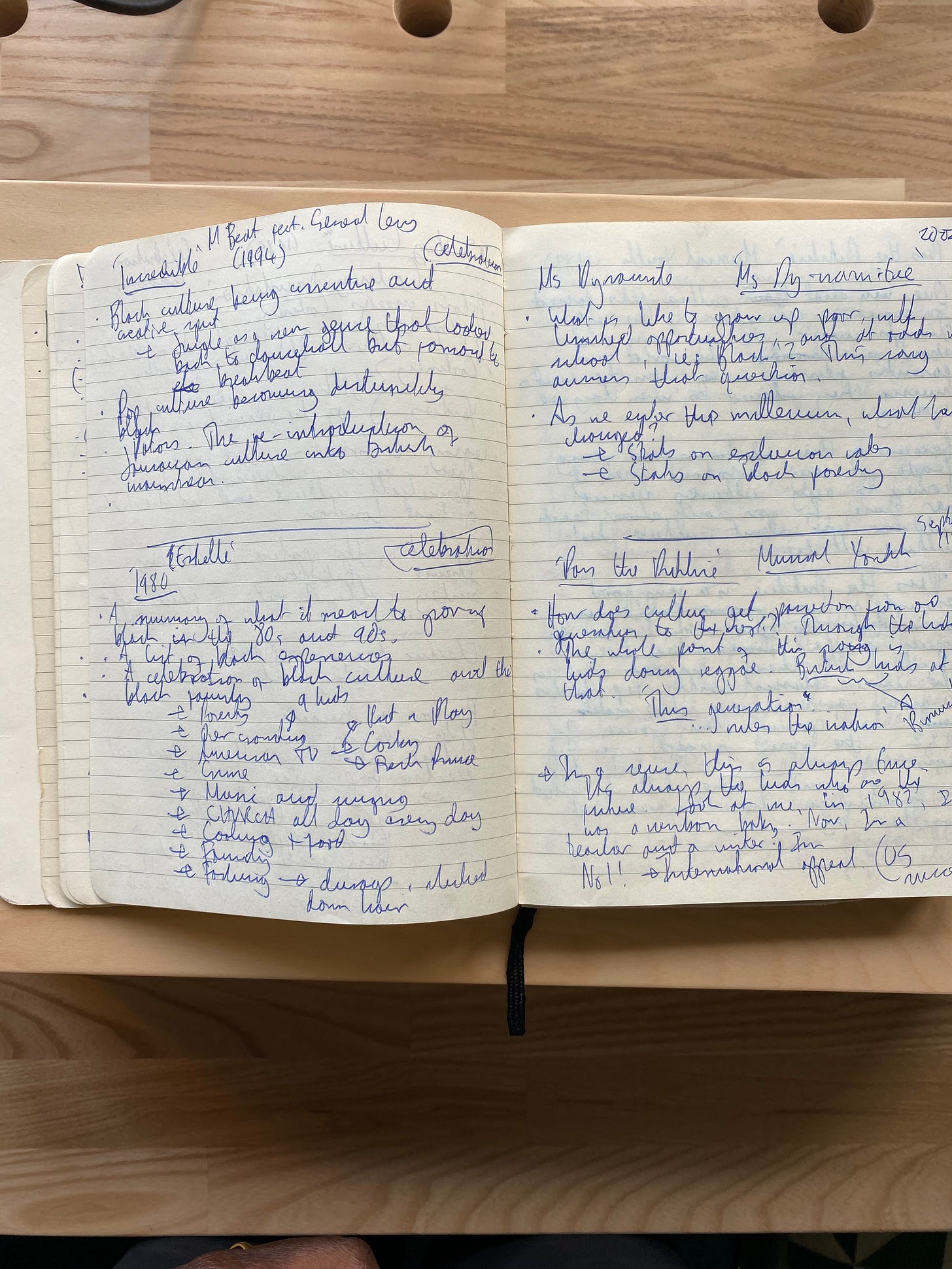Hello. To celebrate the paperback launch of I Heard What You Said (this June!) I thought I’d go behind the scenes on some of my writing – tips, strategies, approaches, behind the scenes stuff that lets you in on all those secrets that writers usually keep to themselves.
There. A nice big picture. Now, on to step 1 – Make a list
As I always say to the kids when I’m giving advice and tips on how to get published: let me give you some free money. If you want to write a blistering act of non-fiction, personal and political, original and expansive, idiosyncratic and insightful and everything in between, start with a list.
It’s a very easy first step. Take something you love, or know about, or have anything at all to comment on, and think of a list of things related to that topic. Automatically, even before your list has been compiled, two very important things have already happened:
1. You’ve made an instant and extensive audit of your lived experiences to date, drawing on experiences that resonate with your core values.
2. You’ve built an intellectual bridge into your very personal areas of interest
My first book, Hold Tight, began in this way. A scribbled list of 60 or so songs that I believed to be significant in the genre or lineage of grime. I didn’t initially think much beyond this first thought, leading with what I knew and what I loved. Whatever you’re into, you’re a list away from doing the same things. If it’s cakes, list the best cakes of all time. Or worst. Or times when you have made a cake. Be creative. Cricket? What’s the list of most important matches of all time? And so on. You get the point.
My follow-up, Black, Listed was a different project, a kind of lexicographical exploration of black identity. But I started the same way, with a list of all the words I could think of that label black people. The startling things here is that the scope of the project was dictated by this initial list, as many of the terms I only had thin working knowledge of. Suddenly, I had my research laid out for me. My level of expertise in black history wasn’t extensive, but the list gave my curiosity a clear focus, allowing me to peek into blind-spots that I didn’t even know I had.
I Heard What You Said began as a list of phrases I could remember being said to me as a black teacher in a majority white system. I simply let the memories flood into my consciousness in no particular order, to be later written up as separate chapters in a loosely chronological order. (For the record, I originally intended to group the chapters by theme, but that turned out to be needlessly complicated). Even What is Masculinity? a book for young readers I co-wrote with my friend Darren Chetty, started life as a list of questions that we devised over coffee. After that, splitting up the content and setting a word count for each was easy.
Going back to I Heard What You Said for a moment, I’ve just unearthed the notebook I was using when I first came up with the idea for that particular book. Writing is messy, and the first stages can feel like pulling random ingredients out of the cupboard with no destination in sight. You’ll see from the picture below that the original working title was ‘Chalkface’ which is
a) what the teaching profession is often (sometimes) referred to as,
b) a weird play on words surrounding race and identity and finally
c) a terrible title for a book you’re going to try and sell en masse.
Look closely and you’ll also see that the list of phrases of which the book would eventually be comprised started to emerge at very this early stage in my thinking, long before I’d fully realised what I would be writing about. “Are you gang?”; “Where do you get your hair done?” and “Are you sound?” are three of the first to get the full speechmark treatment. (Note: none of these phrases made it into the final book. Insert shrug emoji here)
Making a list is a hugely practical way of structuring your manuscript. You will start to see patterns or categories, inviting you to play with the organisation of content, even before you’ve written anything. Black, Listed emerged into a kind of periodic table of overlapping categories: Insults, Terms of Endearment, Political, Loaded Terms, and so on. It gave the project an early focus that helped me get through the tricky parts of content creation.
It will also help with the writing process, which is where a lot of hopeful authors get stuck. ‘I don’t know where to start’. Well, after you’ve compiled your list, all you have to do is hover a palm over the text and let it vibe into your soul. Basically, start with whatever grabs your interest most at a given time. If you’re struggling with the enormity of producing a 70 thousand word-plus manuscript, this is a very liberating thing to do. You’ll feel the relief of being untethered to chronology and it will free up your writing muscles.
Finally, the list approach can save you from stressing out over word count. All you have to do is work out how much you can comfortably write for each item, then do some primary school mental maths to ascertain how long the final project will be. For my playlist books, built around songs, I tend to give about 1,000 words for each song. 70 songs = 70,000 words = an adult sized book (Hold Tight). 30 – 40 songs = 30-40,000 words = a children’s sized book (eg Musical Truth, Musical World).
For Musical Truth (hang on, let’s get another big picture…)
There you go. Ok, for Musical Truth I actually did most of my thinking about each song/ chapter whilst making my original list. You can see the bullet points pictured below, outlining each essay in some detail. Looking back, it’s amazing how much of the heavily lifting is done at this stage, to be followed by shaping, refining, researching, adding, editing, deleting, adding more, etc.
(Studying these pages again, I’d forgotten that I’d placed each song in a category, Celebration, Resistance or Oppression. It was a good idea, helping me to refine my list even at this early stage, before writing a single sentence of prose. I didn't stick with it though. One of the many examples of an idea that gets lost in the soup.)
So there you have it. Step 1 – Make a list. Stay tuned for more steps to come. And do let me know how you’re getting on with your list, in the comments below.









